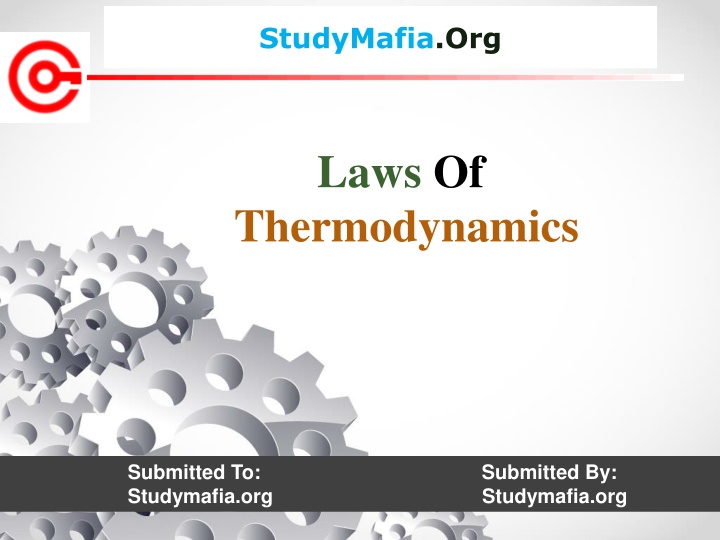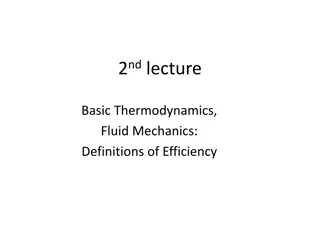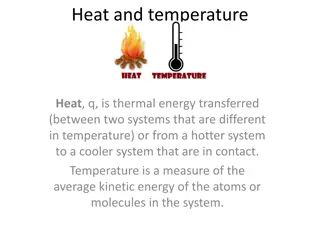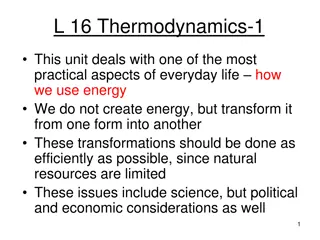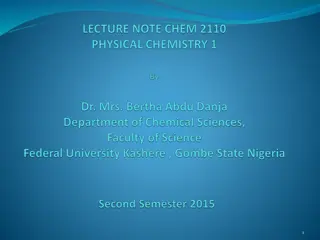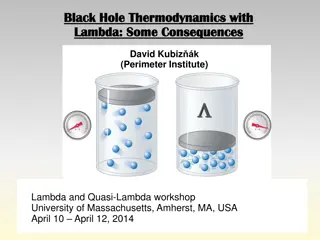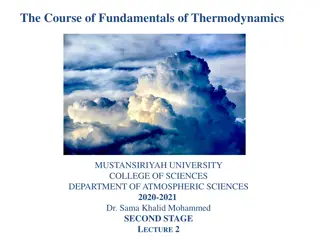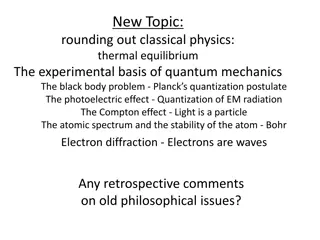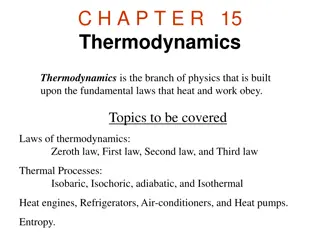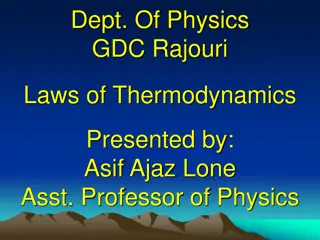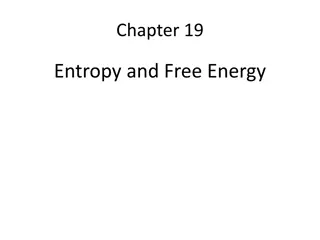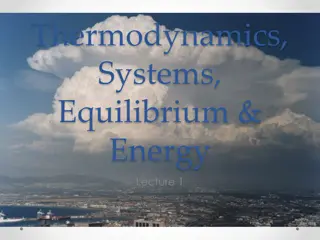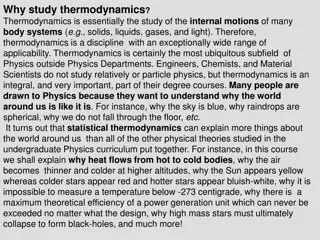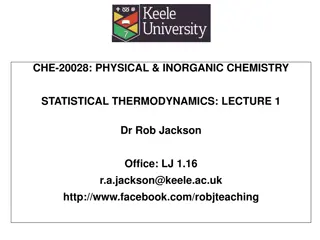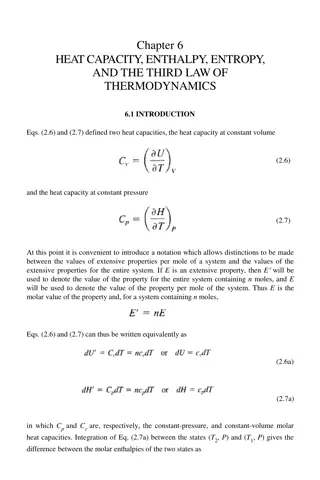Laws of Thermodynamics: Concepts and Applications
Thermodynamics is a fascinating field that deals with heat, energy, and temperature inter-conversions. Explore classical, statistical, chemical thermodynamics, and equilibrium thermodynamics along with the fundamental laws governing these systems. From defining physical quantities to predicting characteristics, delve into the world of thermodynamics with insightful examples and explanations.
Download Presentation

Please find below an Image/Link to download the presentation.
The content on the website is provided AS IS for your information and personal use only. It may not be sold, licensed, or shared on other websites without obtaining consent from the author.If you encounter any issues during the download, it is possible that the publisher has removed the file from their server.
You are allowed to download the files provided on this website for personal or commercial use, subject to the condition that they are used lawfully. All files are the property of their respective owners.
The content on the website is provided AS IS for your information and personal use only. It may not be sold, licensed, or shared on other websites without obtaining consent from the author.
E N D
Presentation Transcript
StudyMafia.Org Laws Of Thermodynamics Submitted To: Submitted By: Studymafia.org Studymafia.org
Table Contents Definition Introduction Types of Thermodynamics Laws of Thermodynamics Examples of Thermodynamics Conclusion 2
Definition Thermodynamics deals with the concepts of heat and temperature and the inter-conversion of heat and other forms of energy 3
Introduction Thermal energy is the energy that comes from heat. This heat is generated by the movement of tiny particles within an object, and the faster these particles move, the more heat is generated. The four laws of thermodynamics govern the behaviour of these quantities and provide a quantitative description. William Thomson, in 1749, coined the term thermodynamics. 4
Types of Thermodynamics Classical Thermodynamics In classical thermodynamics, the behaviour of matter is analysed with a macroscopic approach. Units such as temperature and pressure are taken into consideration, which helps the individuals calculate other properties and predict the characteristics of the matter undergoing the process. 6
Types of Thermodynamics Statistical Thermodynamics In statistical thermodynamics, every molecule is under the spotlight, i.e. the properties of every molecule and how they interact are taken into consideration to characterise the behaviour of a group of molecules. 7
Types of Thermodynamics Chemical Thermodynamics Chemical thermodynamics is the study of how work and heat relate to each other in chemical reactions and in changes of states. Equilibrium Thermodynamics Equilibrium thermodynamics is the study of transformations of energy and matter as they approach the state of equilibrium. 8
Laws of Thermodynamics Thermodynamics laws define the fundamental physical quantities like energy, temperature and entropy that characterize thermodynamic systems at thermal equilibrium. These thermodynamics laws represent how these quantities behave under various circumstances. 9
Laws of Thermodynamics Zeroth Law of Thermodynamics The Zeroth law of thermodynamics states that if two bodies are individually in equilibrium with a separate third body, then the first two bodies are also in thermal equilibrium with each other. 11
Laws of Thermodynamics First Law of Thermodynamics First law of thermodynamics, also known as the law of conservation of energy, states that energy can neither be created nor destroyed, but it can be changed from one form to another. 13
Laws of Thermodynamics Second Law of Thermodynamics Second law of thermodynamics states that the entropy in an isolated system always increases. Any isolated system spontaneously evolves towards thermal equilibrium the state of maximum entropy of the system. 14
Laws of Thermodynamics Third Law of Thermodynamics Third law of thermodynamics states that the entropy of a system approaches a constant value as the temperature approaches absolute zero. 15
Examples of Thermodynamics Whether we are sitting in an air-conditioned room or travelling in any vehicle, the application of thermodynamics is everywhere. We have listed a few of these applications below: Different types of vehicles such as planes, trucks and ships work on the basis of the 2nd law of thermodynamics. 16
Examples of Thermodynamics The three modes of heat transfer work on the basis of thermodynamics. The heat transfer concepts are widely used in radiators, heaters and coolers. Thermodynamics is involved in the study of different types of power plants such as nuclear power plants, thermal power plants. 17
Conclusion Thermodynamics is the science of heat as a special form of energy exchange. It is thus a branch of energetics, the general science of the forms and interchanges of energy From a thermodynamic standpoint energy can be exchanged in two fundamental ways: in the form of work or in the form of heat. 18
Thanks To StudyMafia.org
